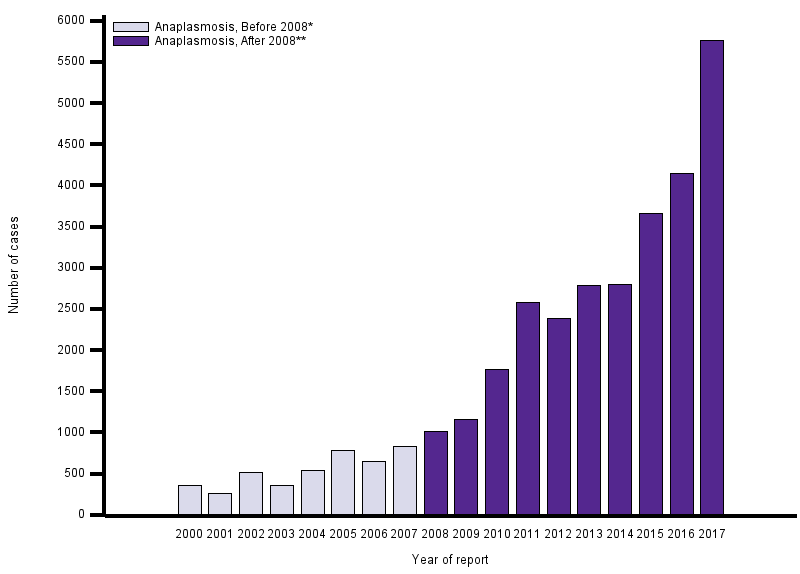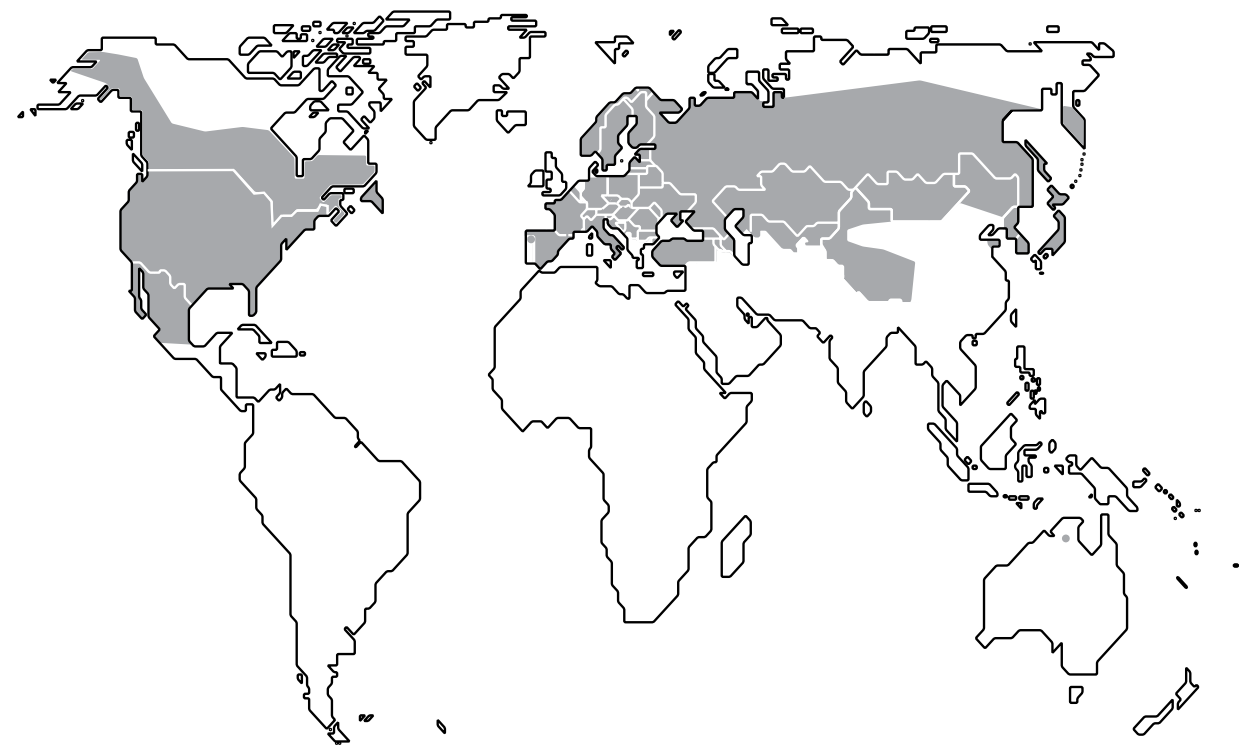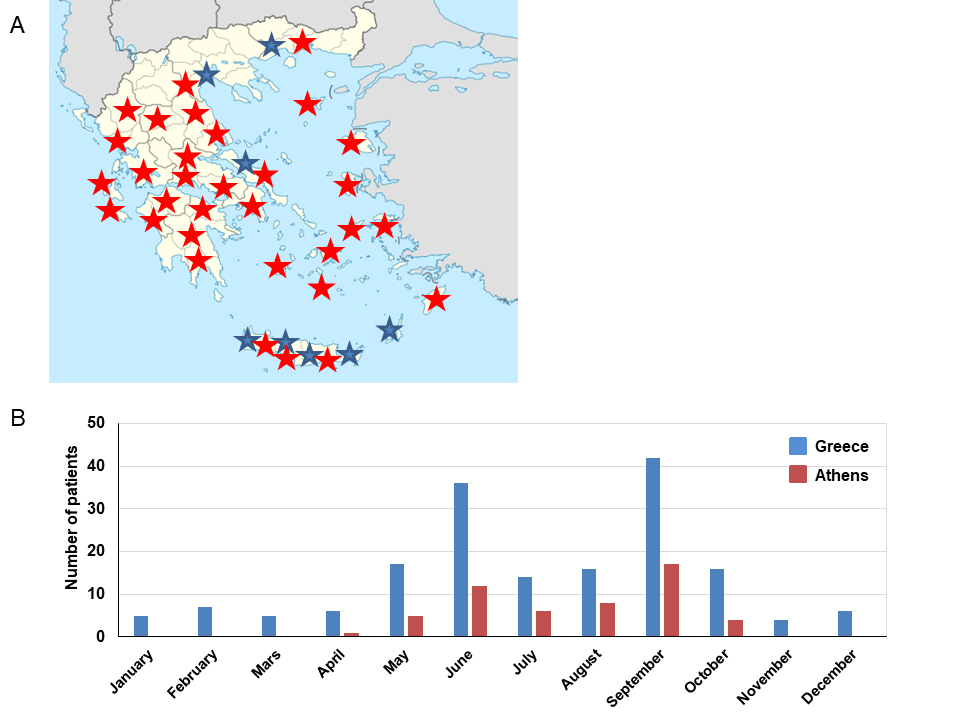Zoonoses are infectious diseases that are transmitted from animals to humans as well as between animals, either directly (e.g., contact with infected animals or their feces) or indirectly (through the consumption of contaminated food and water). The factors that affect the spread of zoonoses include the increase in pet ownership and the cohabitation of humans with animals, mass movements of people and animals, changes in lifestyle, the adaptation of microorganisms, and the intensification of livestock farming. The zoonoses currently known exceed 180 in number, and new ones are continuously being added to the long list.
In most Western countries, zoonoses caused by intracellular bacteria are considered a major public health issue. After the first Gulf War, the American Centers for Disease Control and Prevention classified Coxiella and Francisella as bioterrorism agents. Over the past 30 years in Europe, more than 20 outbreaks of Q fever in humans have been reported (Figure 1). Recently, the Netherlands experienced the largest recorded Q fever outbreak, with more than 4,000 reported human cases, and it is estimated that over 40,000 people were infected with Coxiella during the outbreak. In France, Bartonella and Coxiella are considered the most frequent causes of blood culture-negative endocarditis (Figure 2), while in the United States, more than 12,000 cases of Bartonella disease from cat scratch fever (https://wwwnc.cdc.gov/) and about 6,000 cases of anaplasmosis are reported annually (Figure 3). Outbreaks and cases of Tularemia have been reported in almost all European countries except Greece (Figure 4). Finally, Orientia tsutsugamushi is the most common cause of fever and rash in travelers from Southeast Asia.
Figure 1. Q fever epidemics in Europe, 1987-2009

Figure 2. Cases of endocarditis with negative blood culture due to Bartonella

Figure 3. Anaplasmosis Cases in the United States

Figure 4. Geographic distribution of Tularemia

In Greece, unlike other Western countries, zoonoses caused by intracellular bacteria are not considered a public health problem, as their prevalence and impact are unknown at this time. There are very few publications regarding human cases, although scientific studies in animals indicate the presence of Rickettsia, Bartonella, Anaplasma, Ehrlichia, and Coxiella in Greece. Recently, we found widespread Q fever in Greece as well as a new Coxiella genotype in the aortic valve of a patient with Q fever endocarditis (Figure 5). Greece is endemic for leishmaniasis, with the visceral form (mainly Leishmania infantum) being the most common and found in all geographic regions of the country. According to the Hellenic CDC, around 30-70 cases of visceral leishmaniasis and fewer than 10 cases of cutaneous leishmaniasis (Leishmania tropica) are recorded annually in Greece. Brucellosis, or Mediterranean fever, is caused by bacteria from the Brucella genus and is mainly transmitted through direct contact with infected animals (primarily goats, sheep, cattle, and pigs) or through the consumption of improperly prepared dairy products (e.g., under-ripened "fresh" feta cheese). In general, the incidence of the disease in Greece is among the highest in Europe. Finally, in a recent study we conducted with over 5,000 patients, we found a large number of patients with murine typhus (Rickettsia typhi) in all geographic regions of the country (Figure 6).
Figure 5. Geographic distribution of Q fever in Greece and new Coxiella genotype

Figure 6. Geographic distribution of patients with murine typhus (Rickettsia typhi) and seasonal variation of the disease

Zoonoses examined in the Diagnostic Department
| Dengue FeverWest NileEbola – MarburgZika virusChikungunya virusReproductionEhrlichiaBrucellaCoxiella burnettiLeishmania | Leptospira interrogansBartonellaBorreliaPlasmodium malariaOrientia tsutsugamushiRickettsia conorii (Spotted fever group)Rickettsia typhi (mooseri)Francisella tularensisChlamydia psittaci |
